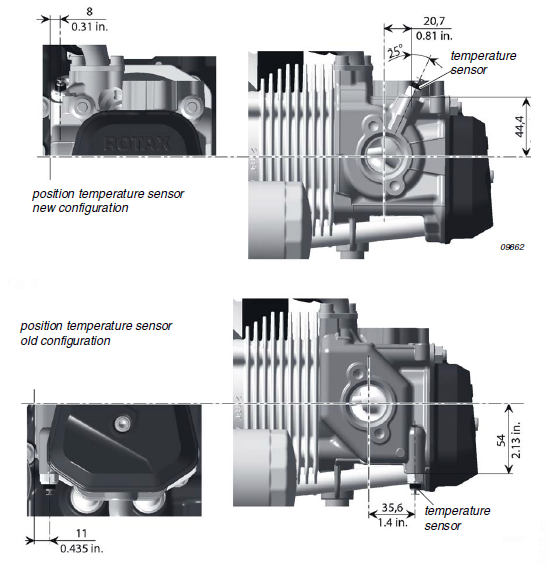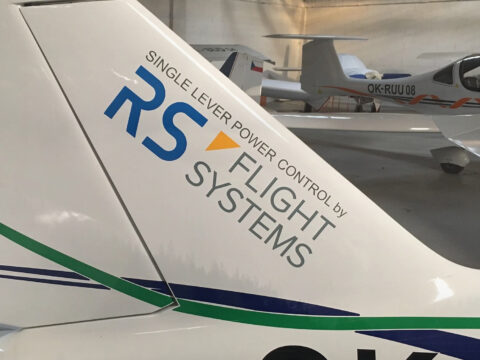We draw all 9 series Rotax Aircraft Engine users attention to the details in the bulletins SB-912-066 / SB-914-047 and SB-912-066UL / SB-914-047UL (http://flyrotax.com/portaldata/5/dokus/d05838.pdf and http://flyrotax.com/portaldata/5/dokus/d06001.pdf). These bulletins highlight important changes for new engines (see the relevant serial numbers in the bulletins), and also in regards to those who may have changed a cylinder head on an older engine (the new Cylinder heads entered the market on engines and as spares from early 2013).
Rotax has now introduced the new cylinder head configuration as standard on new 9 series engines, but it should be noted that this type is also compatible with older engines – and the two types may co-exist on the same engine as a result of maintenance or overhaul. However, because the temperature probe on the new configuration is no longer in the cylinder head material, but now sits in the coolant itself, there is a required change in the way we refer to and measure that temperature. The allowable temperature range for the probe in that position, as well as the naming of the indicating instrument on your aircraft, should you have the new cylinder type on your engine may now be different. i.e. for those with the new cylinder head configuration and probes, it is no longer ‘Cylinder Head Temperature’ that is being reported, but ‘Coolant Temperature’, this should be reflected in instrument naming.
The new configuration cylinder head is readily identified by the position of the temperature probe – it is on the TOP of the cylinder, and no longer underneath (see images below). These sensors are still on cylinders 3 and 2, to allow you to select the hottest cylinder, based upon your configuration and installation. From an operational perspective, it is essential to note that this probe now provides COOLANT temperature, and NOT cylinder head temperature. It is the coolant temperature at the cylinder that matters from the installation and operation of the engine – so if you have a separate coolant probe in the coolant line, that is NOT the reference point for coolant when the new configuration cylinders are installed. The coolant temperature maximum is 120C (248F) – this should be noted on the instrument panel and in the POH, as well as being briefed to pilots. Do note that this temperature limit is the same regardless of coolant type used (eg Evans NPG, BASF Glysantine, etc). This is very different to the measurement of cylinder head temperature maximum of 150C (302F) using the old configuration cylinder head and probe position. In reality it probably makes little difference in operation, but it is something to watch out for! We always advise our Rotax users to check that their fluids used are on the relevant Rotax ‘suitable operating fluids document for 9 series engines’ available at http://flyrotax.com/portaldata/5/dokus/d05777.pdf . Do take the time to read the bulletin(s) and check your engine to see which cylinder head type you have.
If in doubt, speak to your nearest iRMT technician or Rotax stockist.







